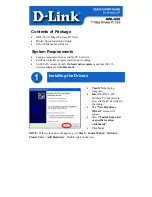
224
ATmega8535(L)
2502K–AVR–10/06
Boot Loader Support
– Read-While-Write
Self-Programming
The Boot Loader Support provides a real Read-While-Write Self-Programming mecha-
nism for downloading and uploading program code by the MCU itself. This feature
allows flexible application software updates controlled by the MCU using a Flash-resi-
dent Boot Loader program. The Boot Loader program can use any available data
interface and associated protocol to read code and write (program) that code into the
Flash memory, or read the code from the Program memory. The program code within
the Boot Loader section has the capability to write into the entire Flash, including the
Boot Loader memory. The Boot Loader can thus even modify itself, and it can also
erase itself from the code if the feature is not needed anymore. The size of the Boot
Loader memory is configurable with fuses and the Boot Loader has two separate sets of
Boot Lock bits which can be set independently. This gives the user a unique flexibility to
select different levels of protection.
Boot Loader Features
•
Read-While-Write Self-Programming
•
Flexible Boot Memory Size
•
High Security (Separate Boot Lock Bits for a Flexible Protection)
•
Separate Fuse to Select Reset Vector
•
Optimized Page
Size
•
Code Efficient Algorithm
•
Efficient Read-Modify-Write Support
Note:
1. A page is a section in the Flash consisting of several bytes (see Table 104 on page
241) used during programming. The page organization does not affect normal
operation.
Application and Boot
Loader Flash Sections
The Flash memory is organized in two main sections, the Application section and the
Boot Loader section (see Figure 113). The size of the different sections is configured by
the BOOTSZ Fuses as shown in Table 93 on page 235 and Figure 113. These two sec-
tions can have different level of protection since they have different sets of Lock bits.
Application Section
The Application section is the section of the Flash that is used for storing the application
code. The protection level for the Application section can be selected by the Application
Boot Lock bits (Boot Lock bits 0), see Table 89 on page 227. The Application section
can never store any Boot Loader code since the SPM instruction is disabled when exe-
cuted from the Application section.
BLS – Boot Loader Section
While the Application section is used for storing the application code, the The Boot
Loader software must be located in the BLS since the SPM instruction can initiate a pro-
gramming when executing from the BLS only. The SPM instruction can access the
entire Flash, including the BLS itself. The protection level for the Boot Loader section
can be selected by the Boot Loader Lock bits (Boot Lock bits 1), see Table 90 on page
227.
Read-While-Write and No
Read-While-Write Flash
Sections
Whether the CPU supports Read-While-Write or if the CPU is halted during a Boot
Loader software update is dependent on which address that is being programmed. In
addition to the two sections that are configurable by the BOOTSZ Fuses as described
above, the Flash is also divided into two fixed sections, the Read-While-Write (RWW)
section and the No Read-While-Write (NRWW) section. The limit between the RWW-
and NRWW sections is given in Table 94 on page 235 and Figure 113 on page 226. The
main difference between the two sections is:
•
When erasing or writing a page located inside the RWW section, the NRWW section
can be read during the operation.
•
When erasing or writing a page located inside the NRWW section, the CPU is halted
during the entire operation.
Summary of Contents for ATmega8535
Page 314: ...314 ATmega8535 L 2502K AVR 10 06 ...
Page 320: ...vi ATmega8535 L 2502K AVR 10 06 ...
















































